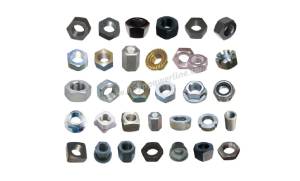When testing and measuring, installing cables and connectors, and working with coaxial components, a full range of design considerations and judgments are needed to select the optimal coaxial cable and connector for the project. Factors considered in this regard include electrical performance, mechanical performance, infrastructure conditions, price, environmental level, standards and compliance assessments.
However, for coaxial components and installations, it is not just the cables and connectors that need to be measured. At the same time, hardware components that ensure good RF performance and electrical isolation must be used for installation. In addition, maintenance is an unavoidable condition, so tools that can perform on-site and return-to-factory repairs to the system also need to be considered.
So, what coaxial cables or cable fittings will be involved to ensure that the equipment and system can operate normally during the entire project period? What assembly and repair tools will be used? Power line fittings supplier introduces you.
EMI / RFI gasket:
Although the shielding function of the coaxial cable assembly can provide high isolation from intrusion signals from the surrounding environment, the joint between the through-wall connector and the metal housing of the coaxial assembly cannot completely achieve shielding. At this time, the use of EMI / RFI gaskets can ensure that the through-wall connector and the housing are completely closed, thereby improving the isolation level of the entire assembly.
These types of EMI / RFI gaskets are generally available in both ring and flat designs. The choice of gasket depends on the type of connector being installed. For example, for SMA interfaces, the available types include both flat four-hole flange gaskets and ring gaskets.
Nuts and bolts:
Many through-wall, flanged, or coaxial connectors require hexagon nuts and bolts when connecting to components. Normally, the flange is properly connected to the component housing only after knowing exactly the screw type, size, and thread. The material composition of these screws is extremely important, because certain environmental factors can cause galvanic corrosion or other degradation effects, which in turn can lead to degraded performance and even failure of equipment and systems. Fasteners are a common failure mode for a class of complex components and systems.

Hexagon Nut
Stand and other hardware:
Straight-through coaxial devices need to withstand greater mechanical pressure. Coaxial cables and connectors are designed to have a certain degree of pressure resistance. However, when the line of an in-line coaxial device is disconnected at a certain location, all external forces will be concentrated at this disconnection point. Therefore, brackets, cable ties or other supporting structures are very important to ensure the stability of the connection layout and reduce the pressure on key connection points.
Dust cap:
Whether in indoor or outdoor environments, dust and particulate matter are a potential threat to any coaxial system. Any particulate matter in the coaxial connector or wiring can cause RF performance to be impaired, such as sparks and failures even under high power conditions. In view of the nature of radio frequency energy, even temporarily idle coaxial ports in the module must be properly terminated to avoid interaction between such ports and the external environment, intrusive environmental substances or interference.
Compared to standard terminations, coaxial connector dust caps are specialized terminations that provide additional environmental protection. In addition, depending on the electrical requirements of a particular port, most dust caps provide short-circuit or non-short-term termination. In addition, for some ports that require frequent operation, a dust cap with a special security tether can be used to prevent the dust cap from being lost or damaged.
+86 319 878 9350
+86 156 1304 7999
+86 319 878 9350
NanYan, DongHuan Road, Shahe, Hebei China
Copyright © Hebei Yipeng Line Equipment Co., Ltd. All Rights Reserved. | Sitemap Powered By 
